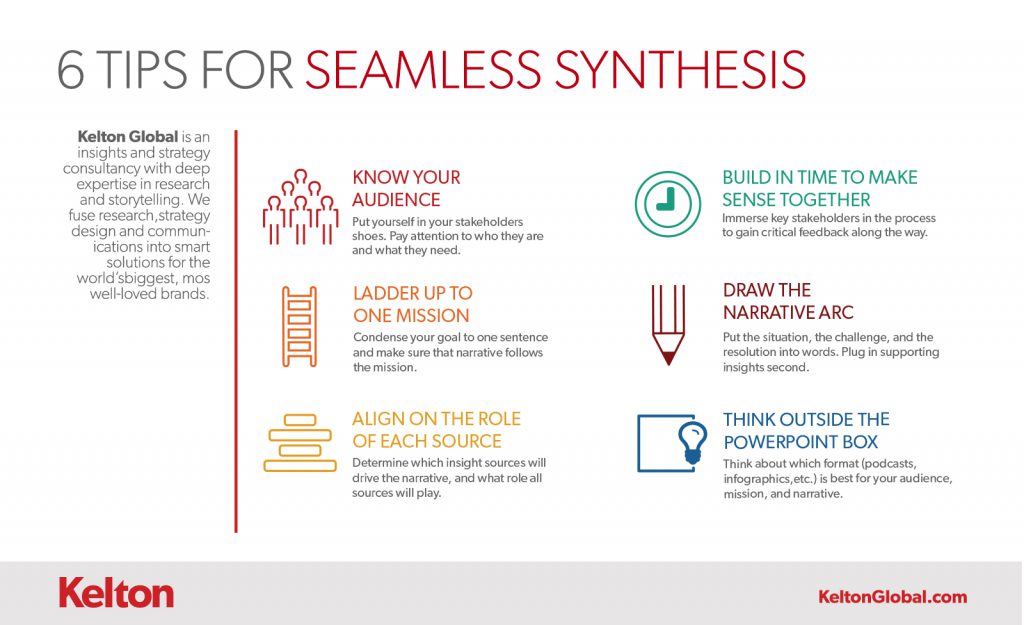Insight Fusion: 6 Tips for Seamless Synthesis
July 14, 2016
Jaclyn JakuckiUse these 6 tips for seamless synthesis to tell impactful stories that mean something to the people that matter in your business.

What do a sushi roll wrapped in grape leaves, wasabi mashed potatoes, and kimchi/avocado quesadillas all have in common? Besides being delicious, of course, these are all great examples of the popular culinary trend, fusion. What’s great about fusion cooking is the ability to combine elements of unique culinary traditions all into a single, enjoyable eating experience.
Outside of the culinary world, fusion simply means the process or result of joining two or more things together to form a single entity. In our world of data and insights, fusion means synthesis. If analysis is the breakdown of individual parts through detailed examination, then synthesis is the opposite–the combination of multiple parts into a whole in order to understand their shared qualities. In other words, analysis is like taking an already completed puzzle apart, whereas synthesis is like putting the puzzle back together again.
At Kelton, we fuse insights with strategy, design and communications through the power of concise and compelling narratives. In order to craft a cohesive story that will move your business forward, synthesis is imperative. Otherwise, you’ll be left with many unique insights that don’t add value or impact to your brand. Use these 6 tips for seamless synthesis if you want to tell impactful stories that mean something to the people that matter in your business:
1. Know your audience: Put yourself in your stakeholder’s shoes and really pay attention to who they are and what they need.
Use the “From/To Exercise” to think about the shift you want your audience to make during your narrative (e.g., move “From” thinking about CSR as cause marketing “To” thinking about social impact)
2. Ladder up to one mission: Describe what you’re trying to achieve in one sentence and make sure your narrative follows that mission.
If there are multiple objectives (which there usually are), distill them into one main objective with key imperatives supporting underneath.
3. Align on the role of each source: Understand the unique purpose of each insight source as well as how it contributes to the overarching goal.
If there are multiple sources within a project (e.g., Quantitative, Qualitative and Cultural Insights, etc.), this step forces you to determine when one is going to lead your narrative, when one is going to support it, and if and when their roles ever switch.
4. Build in time to make sense together. Make it an iterative process.
Empower all key stakeholders by immersing them in the process and gaining critical feedback along the way. It will only make your narrative more relevant and impactful in the end.
5. Draw the narrative arc: Ok, you don’t really have to draw an arc, but describe in words the situation, the problem/tension, and the resolution.
Draw the narrative arc first, and then plug in the data and insights that best support it second.
6. Think outside the PowerPoint box. Think about which format (e.g., podcast, infographic, etc.) best lends itself to your audience, your mission and your narrative.


